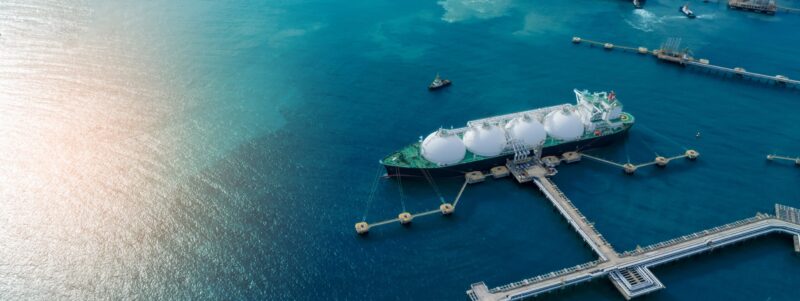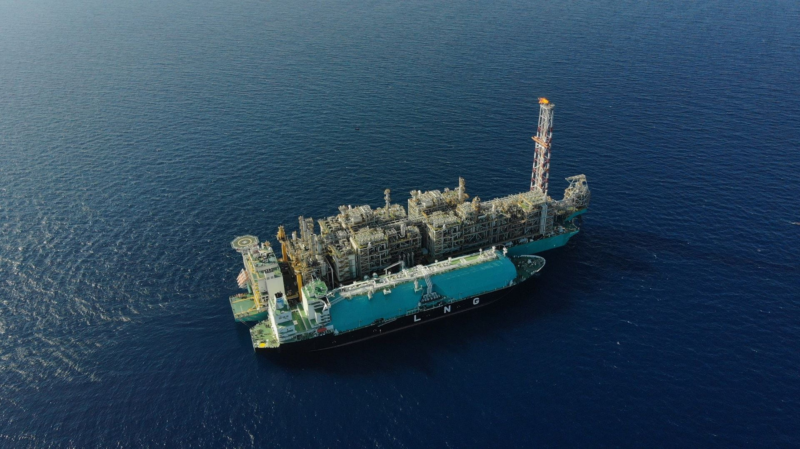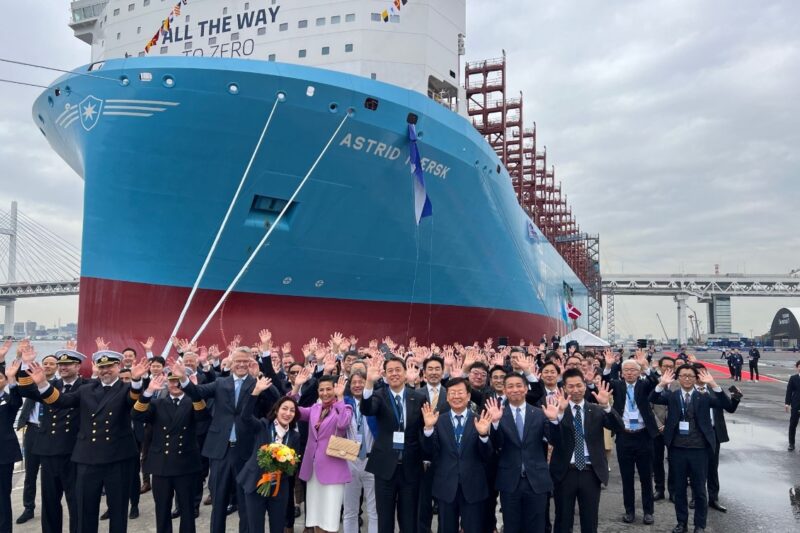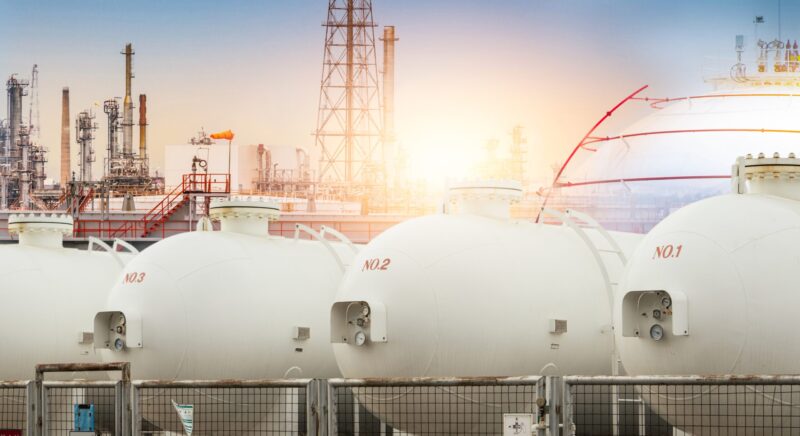
This site
is mobile
responsive

The global trade network relies heavily on an unseen force: maritime shipping. These colossal vessels carry a staggering 90% of the world’s traded goods. However, their vital role comes at a cost, contributing to roughly 3% of global CO₂ emissions. In response to this pressing challenge, the International Maritime Organisation (IMO), the United Nations’ (UN) regulatory body for shipping, has set a bold goal: net-zero emissions for the industry by 2050. This ambitious plan ushers in a new era for sustainable shipping, demanding innovation and collaboration to achieve a cleaner future.
The critical role played by the maritime shipping industry in facilitating global trade is increasingly counterbalanced by concerns regarding its environmental impact. Liquefied natural gas (LNG) initially emerged as a promising solution, offering a cleaner alternative to traditional, high-polluting marine fuels. However, recent scrutiny has cast doubt on the long-term sustainability of LNG. IMO has been campaigning for the next generation of green fuels such as methanol, ammonia and hydrogen, poised to revolutionise the industry, offering a roadmap for a future where both profitability and environmental responsibility can be achieved within the shipping sector1.
LNG enjoys a significant head start. Its infrastructure is well-established, with dedicated bunkering facilities and a network of suppliers. It boasts a lower carbon footprint than traditional marine fuels like heavy fuel oil (HFO). This “bridge fuel” role allows a smoother transition away from the most polluting options. LNG is a composition of methane and some mixture of ethane used to convert natural gas to liquid form for ease and safety of storage transport.
“The global LNG market size was valued at USD9024.15 million in 2023 and is expected to expand at a CAGR of 13.03% during the forecast period, reaching USD18,816.5 million by 20312”
LNG is a great alternative for fuel because it offers a smoother transition for the shipping industry. Existing infrastructure is readily available for LNG compared to newer green fuels like hydrogen or ammonia, requiring less immediate investment for ships and ports. This allows for a more gradual shift towards cleaner options.

PETRONAS’ PFLNG DUA located 140 kilometres offshore of Sabah, can produce up
to 1.5 million tonnes of LNG per year3. Petroliam Nasional Bhd. (Petronas) is the first
global energy company to produce LNG from two floating facilities

Maersk unveiling their second vessel of its large methanol-enabled fleet “Astrid
Mærsk” in Yokohama, Japan5
The world is currently emitting 52 billion tonnes of greenhouse gases a year, and we need to get to zero emissions to avoid a climate disaster4. It is essential to deploy the tools we already have such as solar and wind, and we need to do it faster and smarter. Green methanol, produced from renewable sources also offers a comparable environmental narrative to catalyse the net-zero 2030 movement in the shipping industry. It burns cleaner than both HFO and LNG, with significantly lower emissions of sulphur oxides and nitrogen oxides. Additionally, methanol is easier to store and handle than LNG due to its liquid state at ambient temperatures. This translates to potentially faster bunkering times and lower infrastructure costs.
However, green methanol currently faces significant hurdles. Production capacity is limited, and dedicated bunkering infrastructure is scarce. Modifying existing ships for methanol use requires a substantial upfront investment, a significant barrier to adoption. While the technology is promising, it’s still in its early stages of development.
Shipping giant Maersk headquartered in Copenhagen, Denmark has established its science-based target to achieve net-zero greenhouse gas emissions across its entire business by 2040 to demonstrate its commitment to sustainability. They’ve also set ambitious near-term goals for 2030 to ensure steady progress. As a key step in this journey, Maersk plans to equip 25 container vessels with innovative dual-fuel engines capable of operating on green methanol.
In a parallel initiative, MIDA encourages local maritime companies to embark on sustainable maritime project development. This aligns with the New Industrial Master Plan (NIMP) 2030 which aims to strengthen Malaysia’s ecosystem to address global megatrends and deliver on the promise of inclusive and sustainable development.
To stimulate these endeavours, the Malaysian Government through MIDA has rolled out tax incentives schemes for two (2) key industry segments; Shipbuilding and Ship Repair which has recently been extended until 2027; and Production of Chemical Derivatives or preparations from organic or inorganic sources which encompasses and not limited to green methanol, hydrogen, and ammonia. Companies operating in these fields can enjoy tax breaks whereby new companies can choose between; Pioneer Status with a 70% Income Tax Exemption for 5 years or; a 60% Investment Tax Allowance on qualifying capital expenditures within 5 years. Existing shipbuilding and ship repairing companies however can apply for a 60% Investment Tax Allowance on additional qualifying capital expenditures for upgrading/modernisation within 5 years.
Both LNG and green methanol have a role to play in the future of sustainable shipping. LNG can bridge the gap in the short term, while green methanol paves the way for a cleaner future. Collaboration between governments, shipping companies, fuel producers, and infrastructure developers is crucial to accelerate advancements. Research and development must be prioritised to refine green methanol technology and scale up production. Additionally, investment in infrastructure development will be vital to create a seamless bunkering network for green methanol.
The race towards a greener maritime industry is on. While LNG provides a crucial stepping stone, green methanol embodies the ultimate destination. With continued innovation and collaborative efforts, this clean fuel holds the potential to propel the shipping industry towards a sustainable future, ensuring smooth sailing for both the environment and the global economy.
The maritime industry’s clean fuel transition is an ongoing voyage of discovery, not a predetermined destination. These guides may serve as a compass, guiding investors’ and maritime players’ exploration of both LNG and green methanol. Conducting further research will empower the industry players to make informed investment decisions based on their risk tolerance and long-term vision.
The takeaway for the investors? Don’t rush to choose sides. This is an exciting time for the industry, with innovation taking centre stage. By staying abreast of advancements, investors shall be well-positioned to capitalise on the opportunities that lie ahead, helping shape a cleaner future for global trade. At the moment, the ideal fuel solution might not exist in a single option, but rather in a strategic combination. As research and development progress, the maritime industry will likely embrace a diverse portfolio of green fuels, each with its own strengths and applications. Embrace the spirit of exploration, conduct due diligence, and prepare to chart the course towards a sustainable maritime future.
For more information on the tax incentives and facilitation that we are offering, please reach out to the Chemical & Advanced Materials Division; and the Oil and Gas, Maritime, and Logistics Services Division at https://www.mida.gov.my/staffdirectory/oil-and-gas-maritime-and-logistics-services-division/ and https://www.mida.gov.my/staffdirectory/chemical-and-advanced-material/
